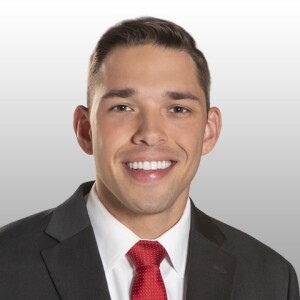It's been roughly five months, or 148 days, since Arizona's nursing homes were put on lockdown. The COVID-19 pandemic has forced facilities to isolate the elderly, in order to keep the virus from spreading and killing the vulnerable residents.
"We’ve gone through Mother’s Day, we’ve gone through Father’s Day and families have not been able to visit with their loved ones," said Dana Kennedy, Arizona's State Director for AARP.
Kennedy has heard firsthand the impact of the isolation. "I saw one caregiver in a caregiver group say, 'I finally got to go visit my mom and she said, 'What did I do wrong?'" said Kennedy, choking back tears. "So some of these residents are fearful that they did something wrong that their family wouldn’t come visit them. It’s absolutely critical that we make sure family members are able to visit with their loved ones, and be able to share with them that they didn’t do anything wrong."
The separation is taking a toll on the elderly, some of whom have dementia and do not understand what is going on with COVID-19 outside their facility.
"She started crying hysterically. She felt like she was in jail," said Nicole Marquez, whose mother, Carole, has dementia and has been living isolated in an apartment for months. "My mom had a very difficult time trying to understand the nuance of what it would mean for her to be in her apartment for the duration."
Marquez has been eager to move her mother to an assisted living facility because she needs additional care, but worries about the loss of freedom and the disorienting isolation.
"The first of September is when our plan is due, for the most part, back to the governor," said Dave Voepel, CEO of the Arizona Health Care Association, an association for skilled nursing facilities and assisted living centers.
Like Kennedy, Voepel is one of the 25 people on Governor Ducey's Long Term Care Task Force.
"The overall goal is to create an approach to where facilities...can re-open, and re-open safely," he said. "The isolation is tough on everybody. Family members do a lot to help out at the facility."
The group has met twice so far, but already ideas include having loved ones meet outside or in a designated room.
"After they visit they can sanitize the room, and they will be wearing PPE," said Kennedy, who stressed safety will not be compromised.
Kennedy noted that while family has been kept out for months, the virus still made its way in to the vast majority of Arizona's facilities
"These facilities closed down and COVID-19 still got in," she said. "And it was not the family who brought it in. It was the workforce, it was the vendors, it was others that have access."
ABC15 reported, in early May, that employees at hot-spot facilities were working at multiple locations, sometimes within 24 hours.
It led to a massive spread. "There’s probably about six skilled nursing facilities out there that don’t have COVID," said Voepel on August 12.
Since the virus ravaged facilities though, nursing homes and assisted living centers have learned and adjusted. "I think they’ve absolutely learned better infection control and I’m better training with their staff," said Kennedy.
There's also more testing now, thanks to the federal government's Health and Human Services.
"They sent everyone in the hot spots, Maricopa and Pima County, testers," said Voepel, who noted hundreds just arrived to one of his member's facility this week. "They are 20-minute rapid test results."
The goal now is to identify and isolate those infected so the rest of the facility can finally have the freedom to see family.
"I think my message to loved ones would be, just hold on. We are getting to it. It will be fairly soon. Hopefully somewhere around Labor Day we will have re-opening guidance," said Voepel.




